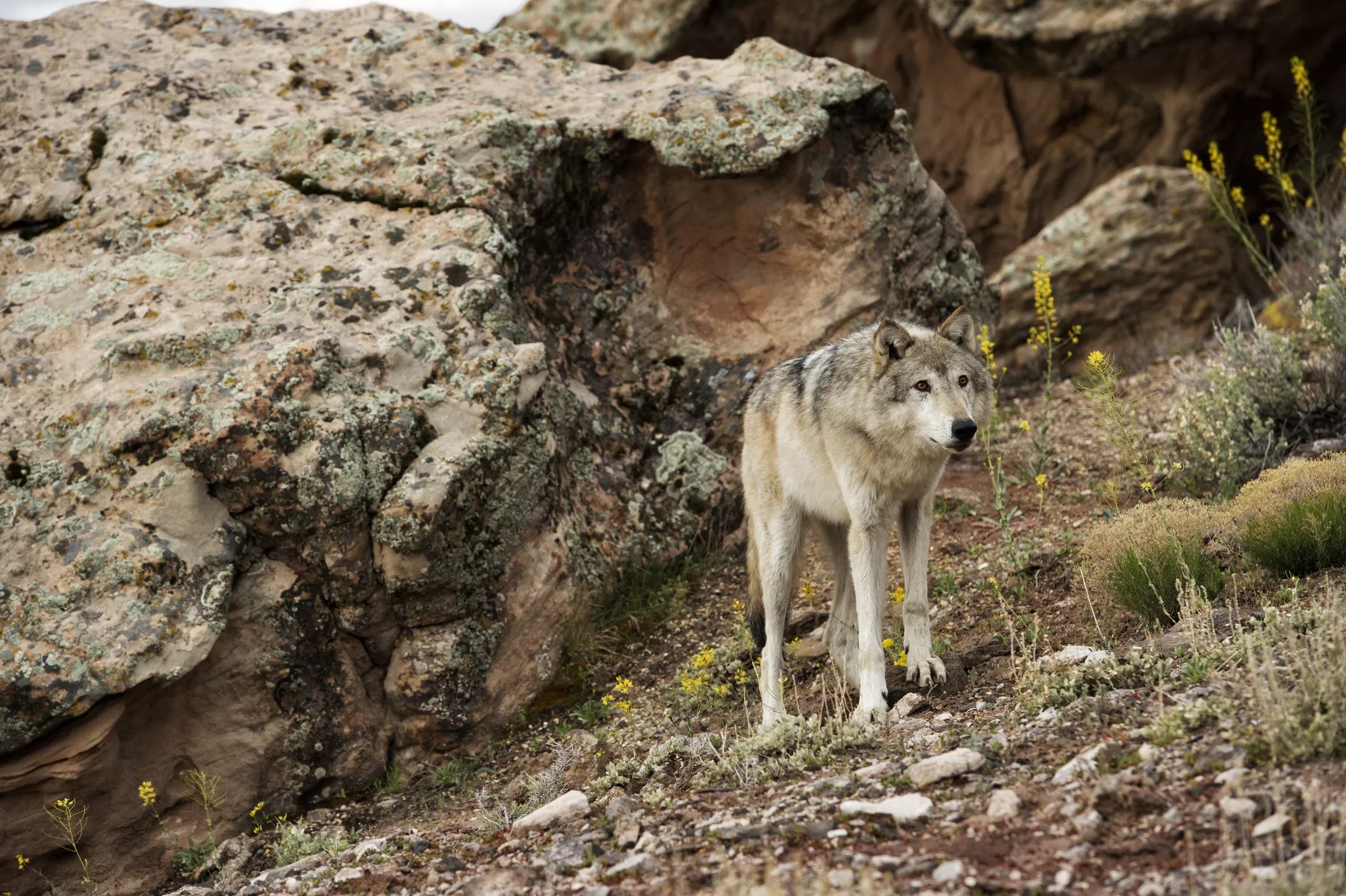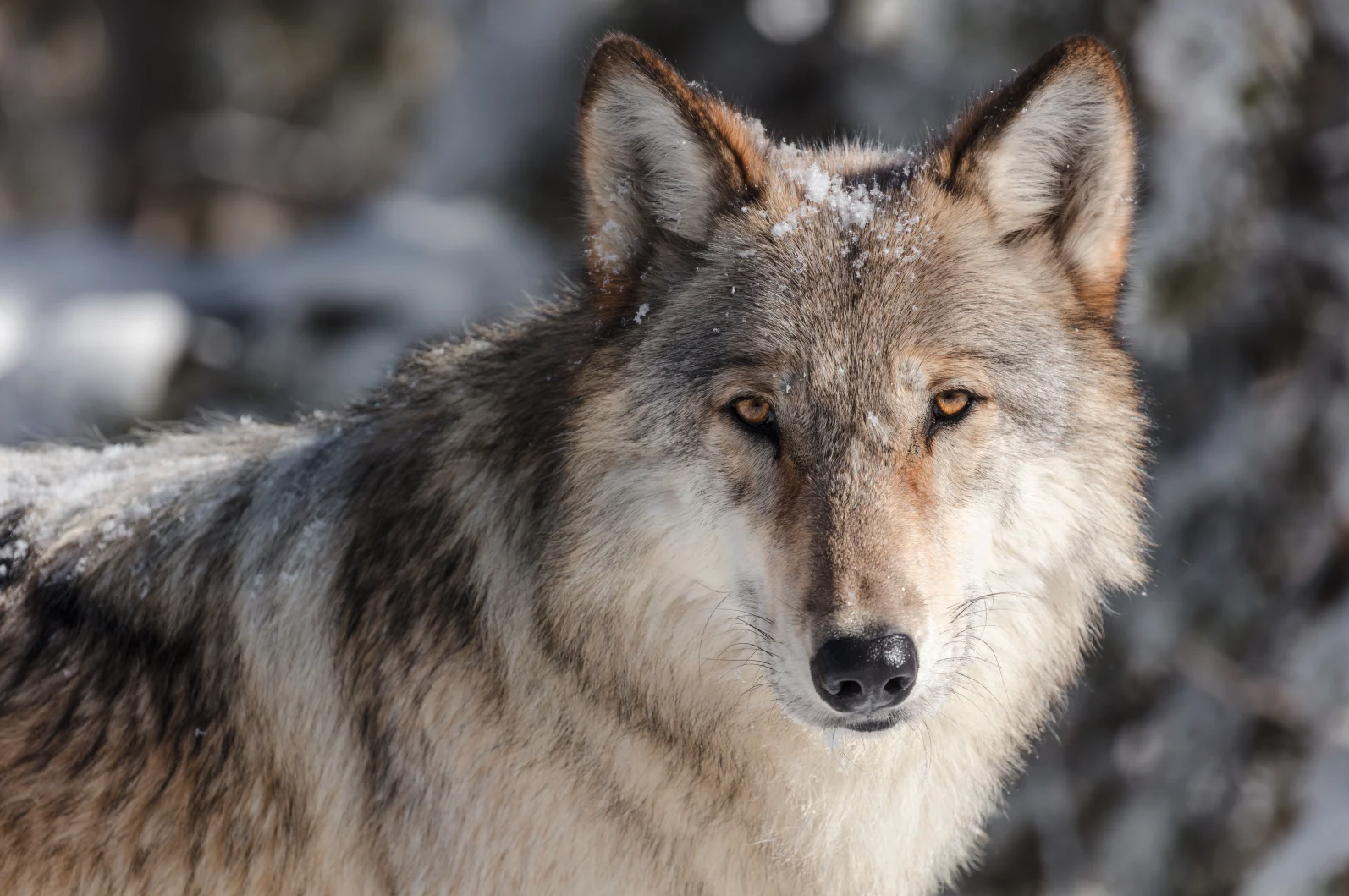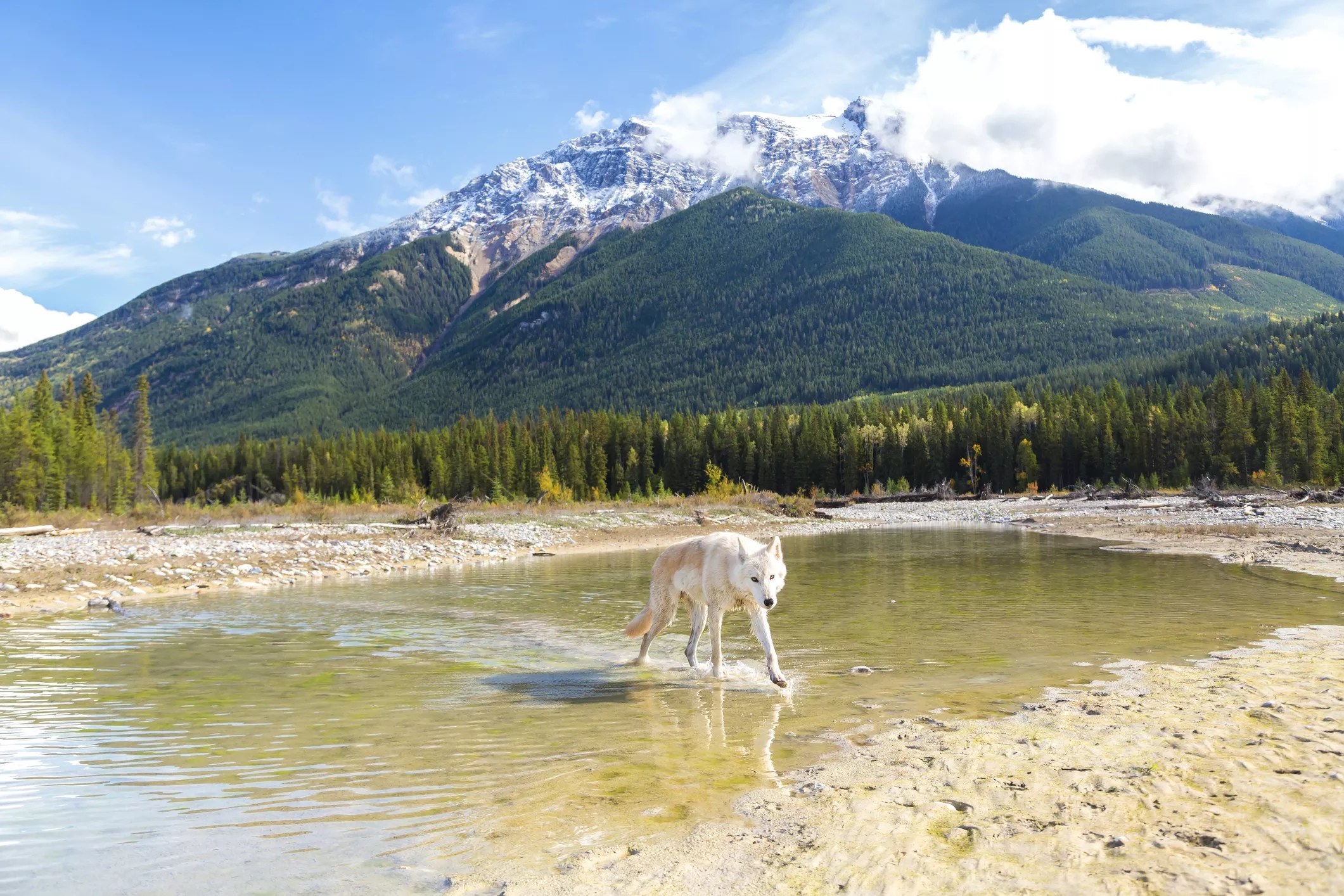
Getty Images

Audio By Carbonatix
Making a plan for wolf reintroduction in Colorado is no walk in the park. It’s more like plodding through a snowy wilderness – but the Colorado Parks and Wildlife Commission is up to the task, holding four meetings over two months specifically to discuss the plan and get the public’s input.
At the second of these meetings, in Rifle on February 8, the commission heard updates from Colorado Parks and Wildlife staff, listened to public comment, and held a structured discussion about several elements of the plan.
The commission was tasked with overseeing the process after voters approved Proposition 114 in 2020. The proposition calls for the state to reintroduce the gray wolf by the end of 2023. Colorado Parks and Wildlife released the first draft of its long-anticipated Wolf Restoration and Management Plan in December 2022.
The plan focuses on impact management and outlines measures that CPW can take to mitigate wolf conflict and help residents of Colorado, particularly ranchers, navigate the impacts of a reintroduced wolf population. All seven chapters – more than 300 pages – are being discussed at public meetings.
Will you step up to support Westword this year?
At Westword, we’re small and scrappy — and we make the most of every dollar from our supporters. Right now, we’re $21,000 away from reaching our December 31 goal of $50,000. If you’ve ever learned something new, stayed informed, or felt more connected because of Westword, now’s the time to give back.
“The commissioners do not speak to each other except on these open mics,” said vice chair Dallas May. “In general, the public knows exactly what we know as commissioners.”
And the public had many thoughts on the plan, easily filling the entire time allotted for their comments. Many of those who spoke were outfitters and ranchers, concerned about how wolves could impact their businesses.
Ginny Harrington, a leader of the Holy Cross Cattlemen’s Association, urged the commission to consider loosening requirements for compensation for ranchers whose animals are killed or injured by wolves, particularly the requirement that a vet needs to be part of the process, as there is a shortage of vets in rural Colorado.
“I ask that you not be so onerous with those requirements, but speak to some of these folks that you are seeing,” she said.
Her requests reflected those of most public commenters in Rifle, though there were a few proponents of introduction, too, with their own thoughts on the plan.
“The primary threat to wolves is humans,” said John Emerick, an emeritus associate professor of environmental science and engineering at Colorado School of Mines. “Recovering them requires protecting them from us, but the CPW’s draft focuses on lethal removal as a strategy to resolve any wrongfully perceived conflict between livestock and wolves.”
Emerick asked the commission to consider requiring conflict-prevention strategies before compensation, and prohibiting lethal control on public land.
Colorado Commissioner of Agriculture Kate Greenberg responded to people’s comments.
“Regardless of what you’re here for and what your motivations are, you’re showing up,” she said. “Someone mentioned that we’re making decisions for people who are going to be co-existing in a way that a lot of the rest of our state isn’t, and I think that’s important for us to keep front and center as we move forward. …We’ve gotten to where we are through hard work and honest compromise.”
As the commission works toward compromise on the plan, main topics on February 8 included funding, the eventual hunting of wolves and the compensation program, all of which have been recurring themes throughout the development of the reintroduction plan.
Justin Rutter, assistant director of financial services for CPW, gave an overview of the funding streams for reintroduction. The legislature gave CPW a $2.1 million budget from the general fund for the project, but as Rutter noted, that will have to be appropriated annually.
“I’m not going to be requesting that they reduce it at any point that I can imagine, but they could choose to decrease in any future year,” Rutter explained. “That’s kind of how the process works. We don’t really have the ability to say that this appropriation will be here forever.”
The CPW could also use funds from lottery overflow, which total around $2 million per year, to fund wolf reintroduction efforts, Rutter added. Though the funding picture isn’t perfectly set year to year, Rutter said the budget appears to be workable at this time.
Dan Gibbs, executive director of the Department of Natural Resources, which houses CPW, made sure to emphasize that the $2.1 million requiring annual legislative approval is normal, but most of the commissioners agreed on the need for a dedicated funding source that is more secure over time.
“Somehow in this process, there needs to be a dedicated fund to accommodate this legal mandate so that other programs and initiatives of CPW don’t bear the brunt of that,” chairperson Carrie Hauser said.
While trying to estimate how much money might be needed for the program, the commissioners asked how much has been spent managing the wolf pack in North Park, which moved from Wyoming on its own and has depredated cattle in the area.

The debate over wolves didn’t end with the passage of Proposition 114.
Jacob Frank/NPS
Luke Hoffman, game damage manager with CPW, said compensation costs have been nearly $13,000, and CPW has spent over $40,000 on conflict-minimization materials to deter wolves from coming near livestock.
The department also managed to collar two members of the pack on February 3. At the meeting, Reid DeWalt, CPW’s assistant director of Aquatic, Terrestrial and Natural Resources, shared that CPW received mortality signals from one of the wolves, wolf number 2101, indicating that the wolf hadn’t moved over the course of three check-in periods.
It turned out the battery pack on 2101’s collar had been ripped off. In the process of restoring his collar, the CPW also collared another male wolf, who appears to be 2101’s offspring. The reintroduction plan calls for wolves from each pack to be collared so that CPW can keep track of where the wolf population is.
Most of that population will be on the Western Slope, which voted much less favorably for the proposition than did urban areas, and the commissioners are focused on trying to make sure people there are compensated well for any harm wolves might bring to their livestock.
The proposed plan suggests fair market value, with a cap at $8,000 per head of livestock. During its discussion in Rifle, the commission asked staff to consider revising the plan to raise the cap to $15,000 and examine ways to fund the compensation program.
Duke Phillips, a commissioner who represents agriculture, said the commission shouldn’t worry that higher compensation would incentivize ranchers to blame wolves.
“Ranchers, farmers – we would all rather have live animals,” he said. “Some clarity around where the money’s coming from would be very helpful.”
Another aspect of the plan that will be revised is the idea of a potential fourth phase of reintroduction, which would classify wolves as a game species in Colorado, allowing them to be recreationally hunted.

The main topics during the February 8 meeting: funding, the eventual hunting of wolves, and the compensation program.
Getty Images
In the draft plan, the first phase calls for a minimum count of fifty wolves in the state for four consecutive years before moving to the second, when wolves would be categorized as threatened in the state. In order to move to phase three, when wolves would be delisted as endangered in the state, there must be an annual minimum count of 150 for two successive years, or 200 in one year.
The plan indicates that a hunting phase could be explored after phase three is complete, but the commission wasn’t clear on whether it even has the authority to consider such a change.
“My own reading of the ballot initiative, and the laws of statutory construction, tell me that changing into a game species has to be done by the state legislature,” said Commissioner James Jay Tutchton. “If someone wants to change the statute to change it from non-game to game, they’ve got to talk to the legislature.”
Other commissioners agreed that Proposition 114 as voters passed it indicated that wolves would always be a non-game species.
“We’re all concerned, rightfully so, about getting buy-in to the plan from agricultural producers and hunters,” Tutchton continued. “I just don’t want us to forget that we need buy-in from the entire state, and this phase four is a pretty big wedge for a lot of the folks that voted for 114.”
The commission’s legal counsel proposed a compromise that would state: “This plan takes no position on whether the commission has statutory authority to move into phase four.”
The compensation and phase four modifications, and others, will be examined by CPW staff before it presents a second draft of the plan to the commission. The plan is to publish the second draft in the spring and finalize it in April or May.
You can be part of these crucial decisions at two more commission meetings. A virtual meeting on the evening of February 16 will focus almost exclusively on public comment, and an in-person meeting in Denver on February 22 will follow the format of the Rifle meeting, with updates from CPW and commissioner discussion in addition to public comment. Written comments can be submitted to wolfengagementco.org.